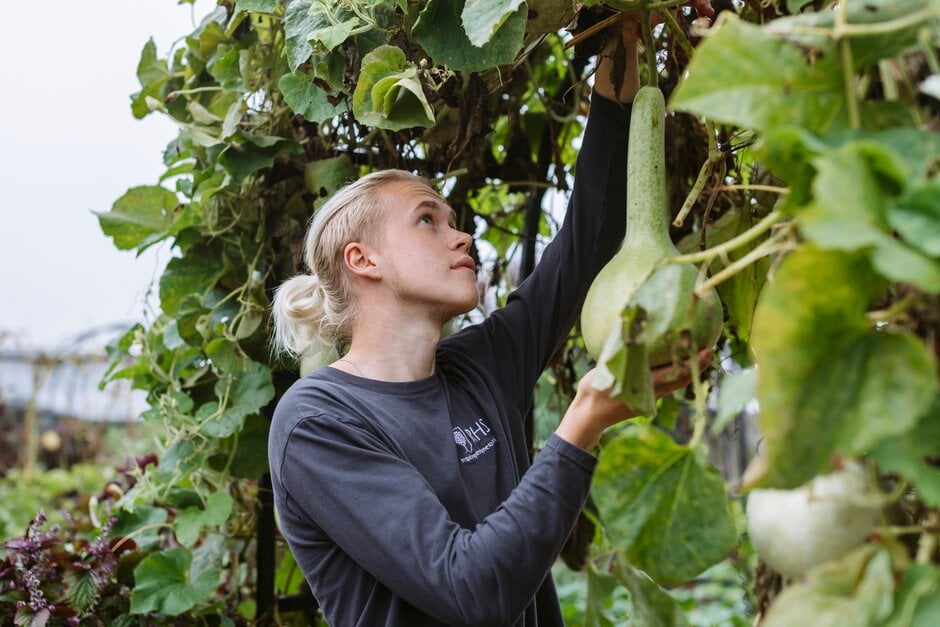
 Gardens are being squeezed, with smaller new-build plots and more space devoted to outdoor living areas, often means less room for veg growing - or does it? I think that even on a small patch, you can still grow big, and by big I mean upwards.
Gardens are being squeezed, with smaller new-build plots and more space devoted to outdoor living areas, often means less room for veg growing - or does it? I think that even on a small patch, you can still grow big, and by big I mean upwards.
Aim for the sky and save space on your plot
Climbing plants like beans and peas are traditionally grown against poles, canes, sticks or netting. This means they take up less ground space. But why stop there? I’ve found in small veg patches that you can also use the climbing and scrambling inclinations of other veg to save more space.
Pumpkins, squash and cucumbers do well with support, and you can even coax courgettes skyward. It’s not too late to try this now; even if you’d planned to grow on the flat you can train the plants in the ground upwards; or buy plants to fill any spare spaces.
Blight-resistant cultivars of cordon tomato mean that these are now more reliable outdoors. But it’s not all about familiar friends, exotic veg such as Malabar spinach are also worth a try.
What are the advantages of growing vertically?

Saving space – Using vertical height is essentially limitless. It also frees up bed space, which can be used for growing ‘terrestrial veg’ like roots and salad crops.
Better harvests – Nourish your crops with plenty of organic matter (forked in prior to planting) and your climbing vegetables will push strongly upwards, flowering and fruiting over a longer period.
Ease of picking – Aerial veg is easier to harvest (not so much bending) and cleaner away from the soil too.
Less slug and snail damage – You’re far less likely to see nibbling at the top of your plants compared to the bottom. In this way, growing upwards provides protection from little munchers.
What can I grow upwards?
Traditional vegetables to buy as plants in June:
Climbing French beans: ‘Cobra’ AGM (cylindrical green pods) and ‘Golden Gate’ AGM (flat yellow pods) will crop over a long period in summer and can also still be sown now.
Runner bean: I like to combine ‘Benchmaster’ AGM (crimson flowers) and ‘Moonlight’ AGM (white flowers) for an attractive mix of flower colour.
Tomatoes: Try buying plants of blight-resistant indeterminate cultivars such as ‘Crimson Crush’ and ‘Magic Mountain’. Grow them as cordons, pinching out the side shoots to keep them heading upwards.
Cucumbers: ‘Marketmore’ AGM and snack-sized ‘Mini Munch’ AGM are great for training tall. Fruits hang downwards making them straighter.
Courgettes: Cultivars ‘Defender’ and ‘Venus’ when staked reach around 60-90cm (2-3ft). But so-called climbing varieties, such as yellow-skinned ‘Shooting Star’, or green-skinned ‘Black Forest’, have elongated stems - potentially reaching 2m (6.5ft)!
Pumpkins and squash: These sprawling plants take up much ground space, but they’ll happily climb; clinging with corkscrew tendrils (and helped by tying in). Choose varieties such as pumpkin ‘Baby Bear’, ‘Jack-be-Little’ and snake-like squash ‘Tromboncino’ or ‘Red Kuri’. Growing aerially also prevents the one-sided scar, where the skin touches the ground.
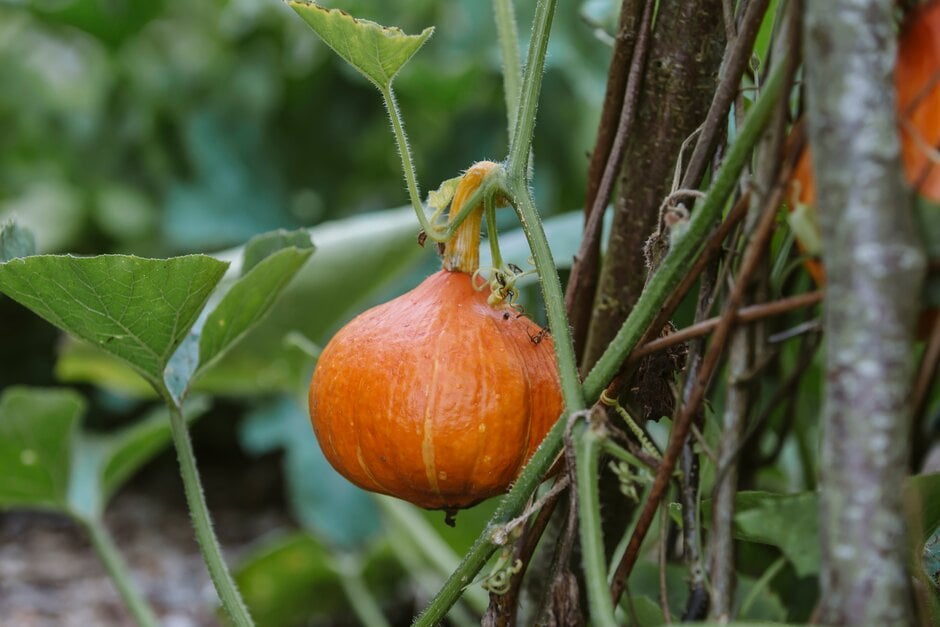 Try something unusual
Try something unusual
Sweet potatoes: Train their trailing shoots up a wigwam. Although we’ve not the ideal climate, in years with good weather, variety ‘Beauregard Improved’ gives reasonable crops.
Malabar spinach: A leafy veg that tastes somewhere between spinach and chard. This twining plant produces leaves all summer long.
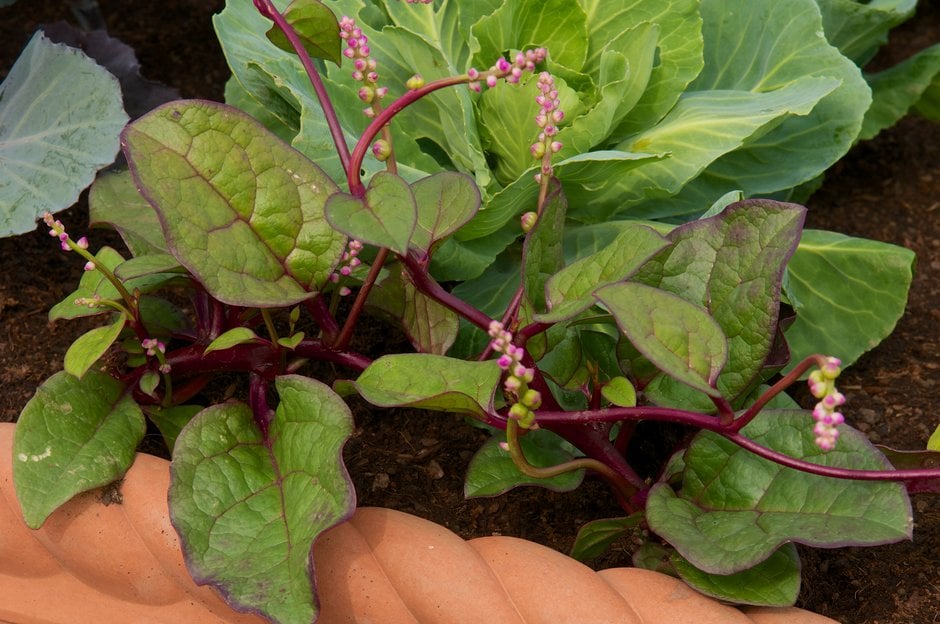
Cucamelon: This scrambling plant looks like a mini watermelon and tastes like a citrus-flavoured cucumber.
Choosing supports
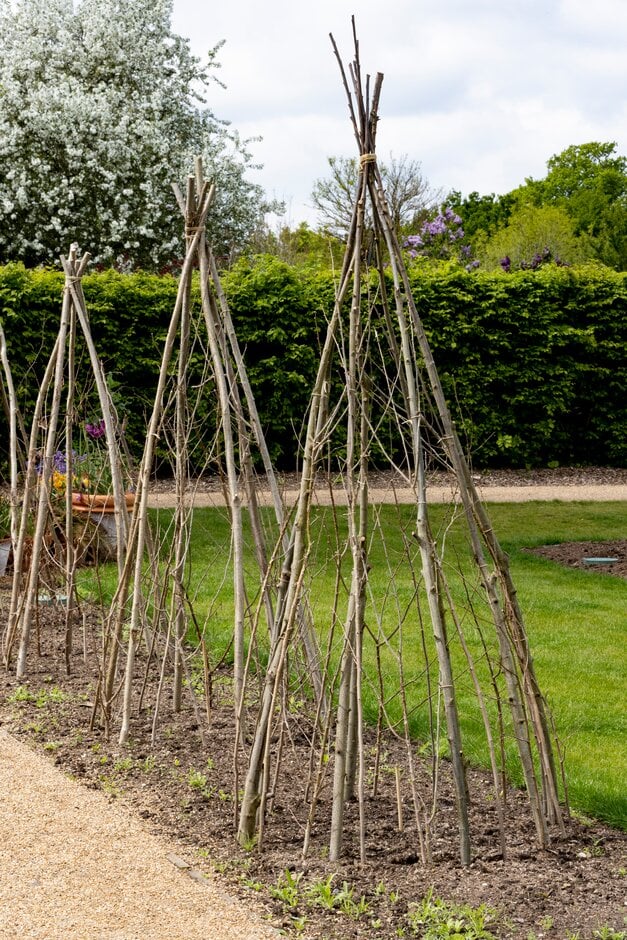 I use hazel poles to give my plot a rustic potager appearance, but bamboo canes work just as well. 2.5m (8ft) poles or canes pushed 30cm (1ft) into the ground provide a sturdy framework for taller climbers such as pumpkins, squash, runner and French beans, cucumbers and climbing courgettes.
I use hazel poles to give my plot a rustic potager appearance, but bamboo canes work just as well. 2.5m (8ft) poles or canes pushed 30cm (1ft) into the ground provide a sturdy framework for taller climbers such as pumpkins, squash, runner and French beans, cucumbers and climbing courgettes.
Tomatoes and standard courgettes don’t grow as tall, so use shorter, single stake supports like hazel poles, stout canes, or wooden stakes of around 1.5m (5ft) to 1.8m (6ft).
Construct traditional wigwams or double cane rows (bound together with jute string). Alternatively, use an obelisk frame, or an existing pergola.
When tying in secure non-clinging stems to supports with jute string (rather than plastic alternatives). Soft flexible ties are better for supporting the hollow stems of cucurbits, which are easily choked by string.
Happy growing!
|
|
Top tips!
- Fertilise with tomato feed once a week
- Match your support to the crop – heavier fruits need a robust framework
- Water well in dry weather to reduce powdery mildew
- Water the roots not the leaves to minimise fungal diseases
- Tie in stems at regular intervals
- Harvest ripe produce frequently
|
| |
|
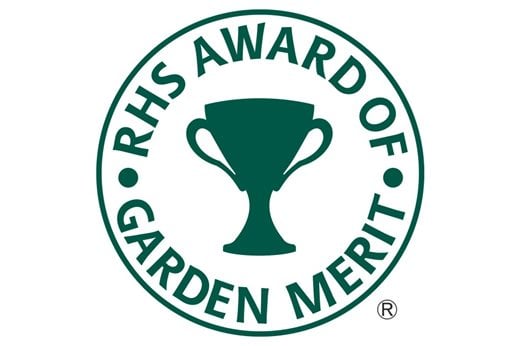 Pick of the crop
Pick of the crop
Look for the RHS Award of Garden Merit (AGM) when buying vegetable seed or small plants. You can also download the RHS lists of recommended cultivars.
You may also be interested in...
About the author - Chris Taylor
I'm a Horticultural Advisor at the RHS. My job involves answering gardening questions from RHS members, whether they need to know how to prune apples, or seek advice on creating a wildflower meadow. In my spare time I enjoy looking after my challenging dry shady garden and growing many things (including veg) in pots.

